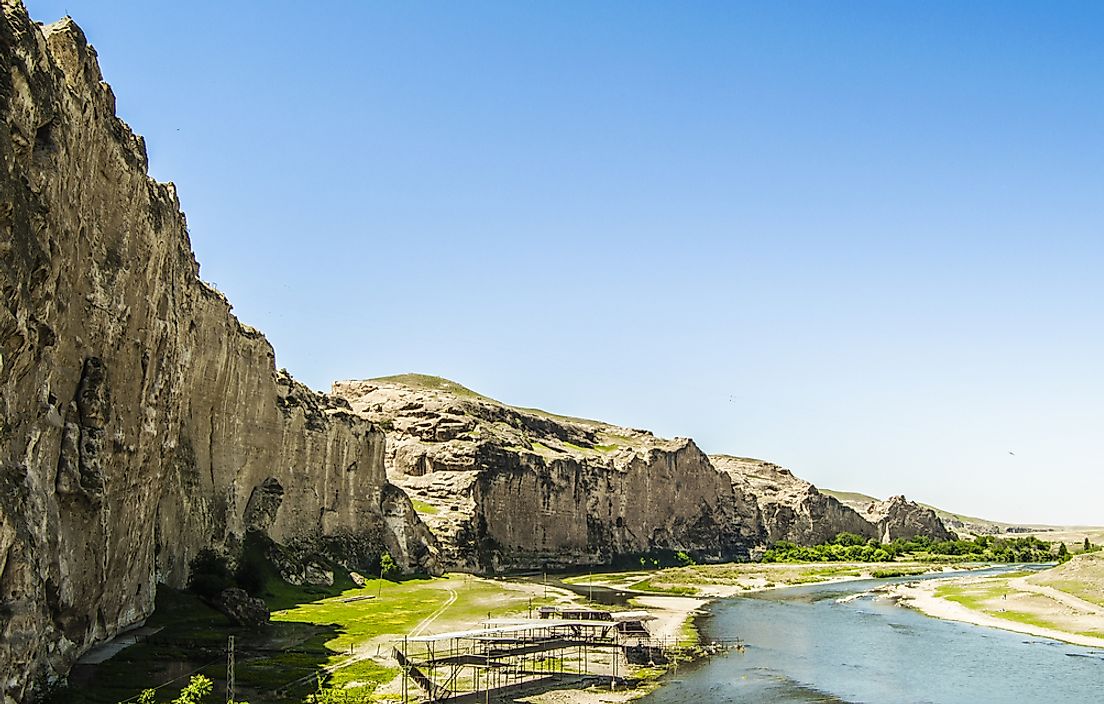Where Was Mesopotamia Located?

Mesopotamia is a term used to refer to a medieval region located on the banks of the Tigris and Euphrates Rivers, which now lies in the modern-day Middle East. The region corresponds to most parts of modern day Iraq as well as parts of Iran, Kuwait, Syria, and Turkey. Mesopotamia is important in history for being the cradle of civilization as it was the site of significant developments throughout history.
History Of Mesopotamia
Mesopotamia encouraged human settlement because the constant flooding from the two rivers rendered the soil suitable for agriculture. During the Bronze Age, Mesopotamia was home to such empires as the Assyrian, Akkadian, Babylonian, and Sumer. These empires were succeeded by the Achaemenid Empire after which it was conquered by Alexander the Great in 332 BC. The region was then ruled by the Greek Seleucid and Parthian Empires, Romans, Sassanid Empire, and eventually by the Muslim Caliphate in the 7th century.
Geography Of Mesopotamia
Both of the rivers have their headwaters located in the Armenian Highlands. The rivers are part of an extensive river system which also includes numerous tributaries. The region’s climate is semi-arid and is home to a vast desert to the north. The rivers integrate and drain into the Persian Gulf. The Zagros Mountains bound the area to the northeast and the melting snows from the peaks aid in irrigation. The region’s high water table also facilitates irrigation. Since the medieval era, construction of canals has been carried out in the area to mitigate flooding and encourage human settlement. Pastoralism has been practiced in the region along agriculture, and the people participated in long distance trade of agricultural produce to obtain other materials such as timber and precious metals. The Arabian Plateau bounds the region to the southeast.
Culture Of Mesopotamia
Archaeological evidence and scholarly texts have shed light on the elements of Mesopotamian culture. Festivals were held every month to celebrate a variety of events such as the New Year, military victories, and divinities. Music was also embraced in the ancient region and songs were passed down generations as a form of oral tradition. The most notable musical instrument used by the people of Mesopotamia is the Oud. It is made from wood, and it is considered the European’s lute precursor. Certain games feature prominently in Mesopotamian Art including hunting, wrestling, boxing, a type of polo, and majore. Ancient Mesopotamia is portrayed as a patriarchal society, where boys were enrolled in school and learned different trades while girls were left at home cooking, housekeeping, and taking care of the other children. Women, however, could obtain a divorce and own property. Some graves excavated from the region have been found to contain precious materials and other possessions.
Contributions To Human Development
Mesopotamia is called the cradle of civilization for numerous developments. Sumerian is considered to be Mesopotamia’s earliest language. Other languages spoken by the Mesopotamian population include Subartuan, Akkadian, and old Aramaic. Cuneiform was invented in the region, and it facilitated literacy efforts. Towns and temples in Mesopotamia boasted extensive libraries which enabled the population to learn and write. Numerous Babylonian literary works continue to be translated to date. Mesopotamian scholars made great strides in the field of mathematics, astronomy, art, medicine, technology, religion, and philosophy.











